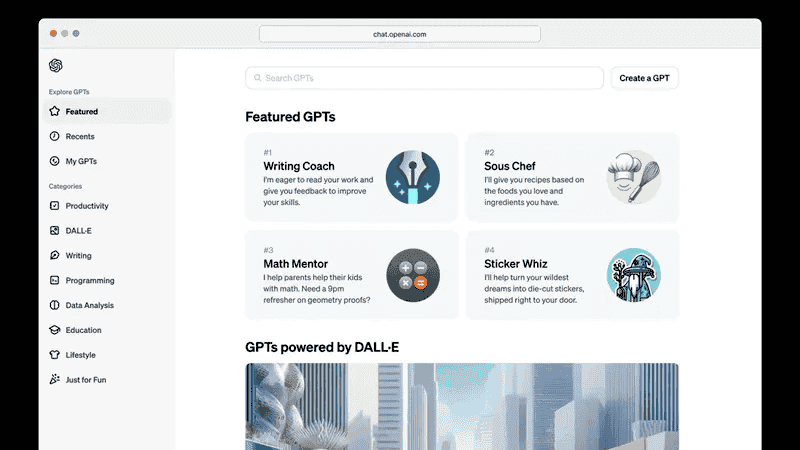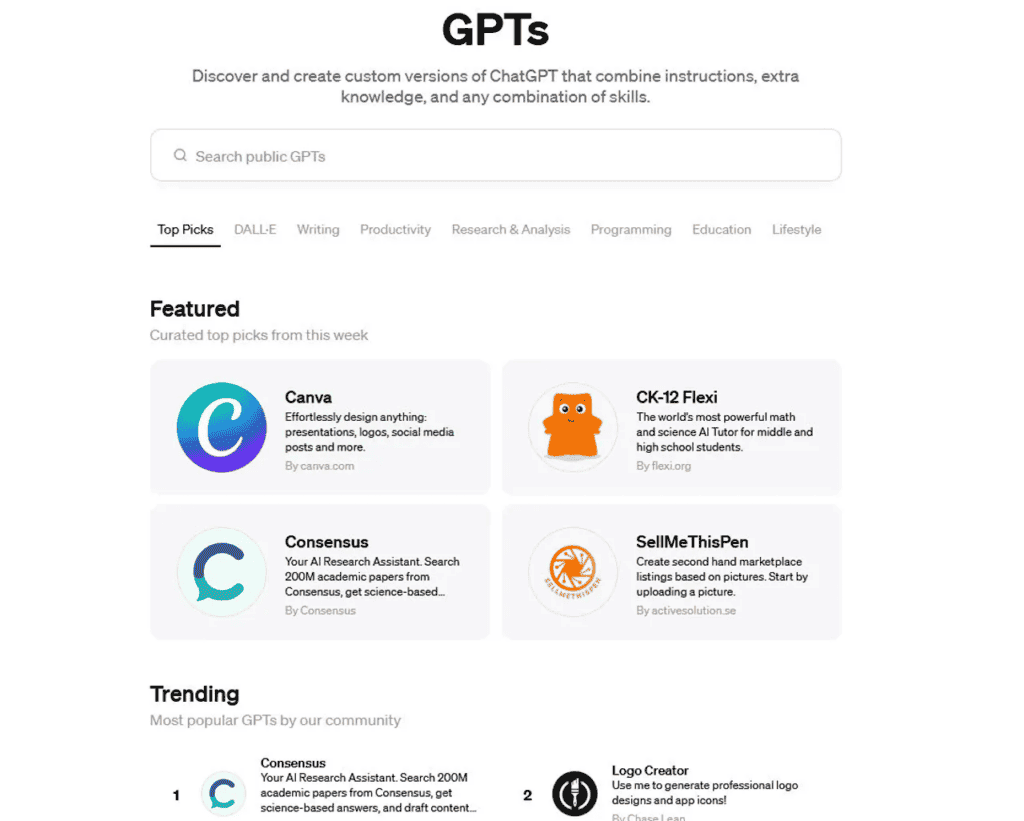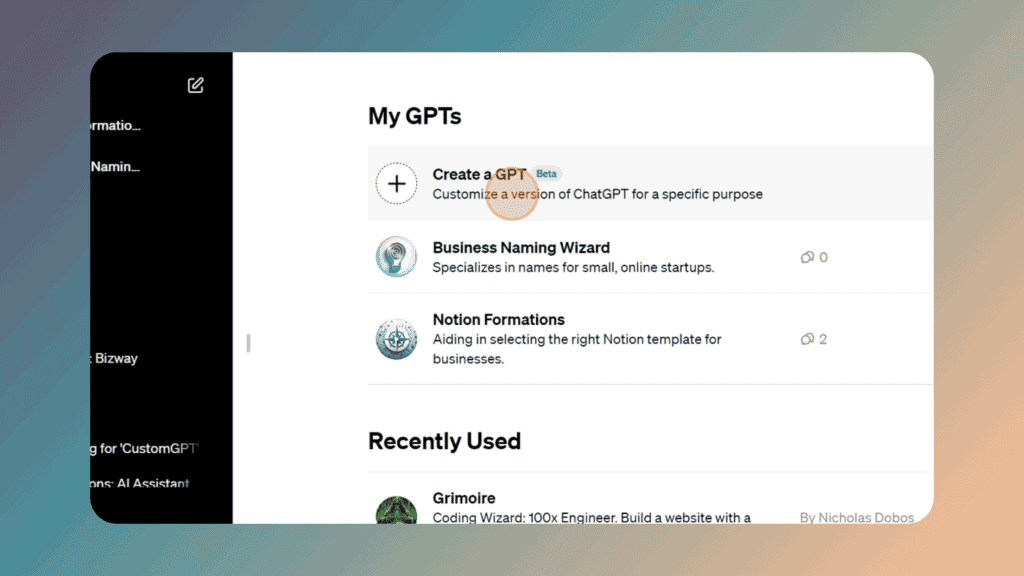For a monthly fee of $20, a ChatGPT Plus subscription offers more than just access to GPT-4. In addition to access to the latest iteration of the GPT model, subscribers get the opportunity to explore and use OpenAI’s advanced features to create custom GPT-based chatbots. Despite the initial sense of complexity, building your own custom GPT chatbot is a surprisingly accessible endeavor, even for those with no coding experience.
By using the resources and guidance provided within the subscription, users can navigate the process with relative ease. Through tutorials, templates and intuitive interfaces, the path to creating a custom chatbot becomes clear and manageable. The feature exceeds expectations and shows the true potential of custom GPT apps. (Via: DigitalTrends)
You won’t need any coding skills
What is really remarkable is that coding skills are not a prerequisite for this venture. OpenAI’s user-friendly tools and end-to-end support allow people from all backgrounds to get involved in the creative process of building and refining their own chatbot experience. This democratization of AI enables users to leverage the capabilities of advanced language models for their specific needs, whether for personal projects, business applications, or creative pursuits.
In essence, a ChatGPT Plus subscription offers not only access to cutting-edge AI technology, but also the opportunity for users to become creators in their own right, shaping the future of conversational AI without the barriers of technical complexity.
To explore GPT’s new custom feature, you’ll need a GPT Plus subscription. So be sure to sign up for one or borrow a free trial from someone if you can’t wait to try it. This feature opens up exciting possibilities for tailoring GPT-based models to your specific needs, whether for personal projects, business applications, or creative endeavors. Don’t miss the opportunity to unleash your creativity and explore the full potential of conversational AI with Custom GPT.
ChatGPT and GPT

First, don’t confuse the term “GPT” with the ChatGPT we all know. The latest is OpenAI’s chatbot, which has renewed the world and started a new race for AI models. IChatbots like ChatGPT can do a lot of things with the help of AI and you won’t need to navigate through multiple websites looking for answers. Below you will see the difference between GPT and ChatGPT.
- GPT (Generative Pretrained Transformer): GPT is a family of language generation models developed by OpenAI. These models are built on the Transformer architecture, a deep learning architecture originally proposed for natural language processing tasks. GPT models are pre-trained on massive amounts of text data, allowing them to generate consistent and contextually relevant text when prompted. Models can perform tasks such as text generation, text completion, translation, summarization, and more. GPT models have seen significant progress over the years, with iterations such as GPT-2, GPT-3, and others each offering improvements in scale, performance, and capabilities.
- ChatGPT: ChatGPT is a specific instance of the GPT architecture optimized for conversational interactions. It is trained on a diverse range of conversational data from the Internet, allowing it to understand and generate human responses to text input. ChatGPT is designed to engage in open conversations on a variety of topics, provide information, answer questions, offer suggestions, and more. It leverages the capabilities of the underlying GPT architecture while fine-tuning its parameters for improved conversational capabilities.
How to create a custom GPT pattern
As you delve deeper into ChatGPT, you’ll find that much of your experience revolves around using custom GPT models, whether created by you or others. To start using this custom AI power, here’s how to start creating your custom GPT:
Gizchina News of the week
- Stage 1: Go to the ChatGPT website or launch the ChatGPT app and sign in to your account.
- Step 2: At the top of the page, find and click the “Create GPT” button to start the process. This will put you on the path to making your own custom AI model.
- Step 3: Give your custom GPT a name and description and provide custom instructions. Think of these instructions as a personalized guide for your AI, shaping its behavior and reactions in unique ways. Use the preview window on the right side to watch how your AI interprets the prompts. Experiment with different prompts to gauge performance by adjusting the prompts on the left until you’re happy with the AI’s behavior.
- Step 4: Optionally, enrich the capabilities of your AI by adding specific data sources, such as documents or files. Assess how this additional data affects your AI’s operations and refine instructions accordingly.
- Step 5: Customize the functionality of your AI by selecting options such as DALL-E art generation abilities, access to the search engine, or advanced data analysis. Customize its capabilities to suit your specific needs and choose which add-ons it can access if you like.
- Step 6: Once you are satisfied with the performance of your custom GPT, click the green “Publish” or “Update” button to finalize your creation. Your custom GPT will then be available in the menu on the left along with other OpenAI GPT models and your previous creations.

Sharing your custom GPT model
Now that you have successfully created your own ChatGPT, it might be a good idea to share it with others. Therefore, you will show off your AI abilities and at the same time get help and upgrades from others. Here are the simple steps required to share your GPT with others:
- Stage 1: Create a new custom GPT by following the steps described earlier. You can also edit an existing custom GPT by selecting the three-dot menu next to it and selecting the edit function.
- Step 2: Make the desired changes to your custom GPT. However, instead of immediately selecting the green “Update” button, first click on the menu icon with three dots next to it.
- Step 3: From the pop-up menu, select the sharing settings for your AI. You can choose to limit use to yourself. You can also make it available to anyone who uses these add-ons, or allow access to anyone with a connection. To share it with whoever you want, select “Anyone with a link”.
- Step 4: After publishing or updating your custom GPT, you can now share it with others by providing them with the generated custom link.
With these steps, you can easily create and share your custom GPT models with colleagues, friends or the wider community.

Conclusion
Working to provide custom GPT models is a good way to tailor AI capabilities to specific needs and preferences. With this simple step-by-step process, you can create personalized AI experiences. You can shape behavior, reactions and functionality according to your requirements.
Through customization options such as providing instructions, adding data sources, and selecting additional functionalities, users can fine-tune their custom GPT models to suit different applications and scenarios. Whether for personal projects, business solutions, or creative endeavors, custom GPT models empower users to use AI technology in innovative ways.
Additionally, the ability to share custom GPT models with others improves collaboration and knowledge sharing within the AI community. As AI continues to evolve and shape the future, creating custom GPT models allows people to be active participants in this transformative journey. There are endless ways to customize and collaborate. By allowing users to create custom GPT models, OpenAI takes an important step in the democratization of AI. As a result, it truly unlocks the full potential of this technology.

